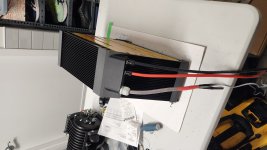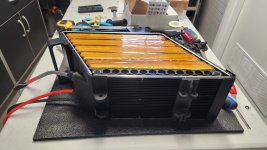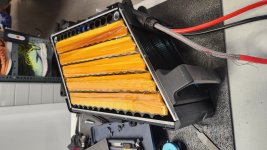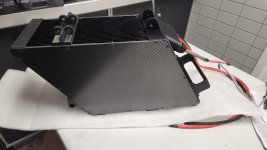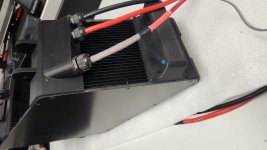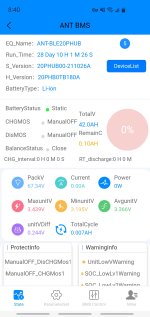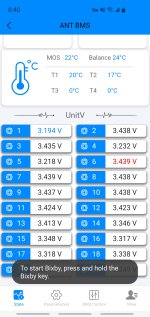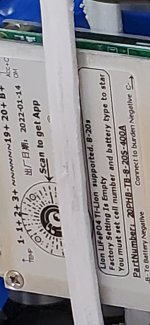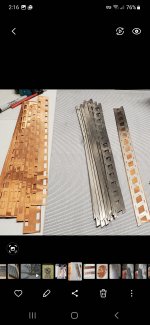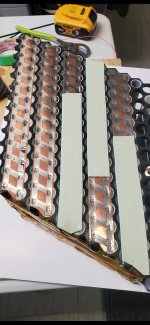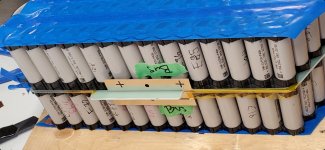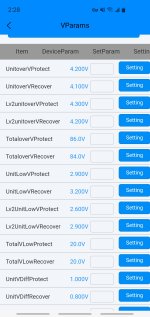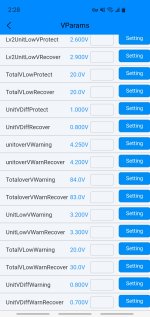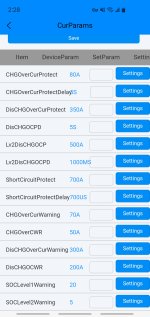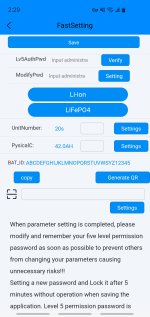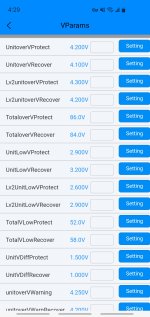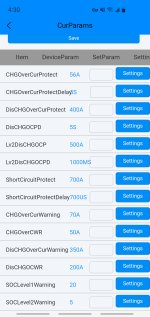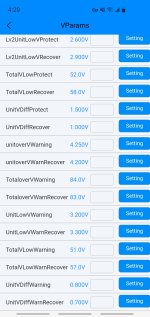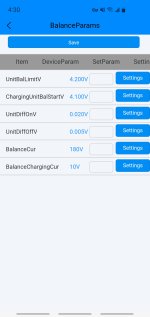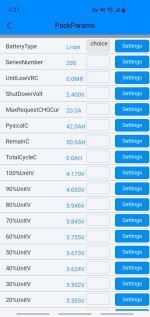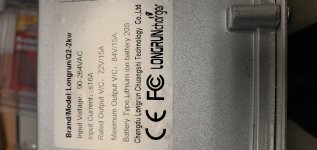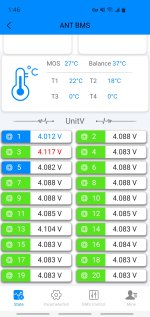That's a huge variation in cell voltages, given that there is no load on them, just sitting there running the BMS. That's something you typically only see with mismatched cells, which will never remain balanced in use, as they don't have the same capacity or capabilities. So the BMS will have a lot of work to do--the harder the pack is used, and the closer it is brought to full or empty, the more of a problem it can be.
I don't see anything that shows us what your settings are actually at, or what settings you have available to change (and no model info to see what the manufacturer site might say), so I can't suggest any specific changes to make from what they are at now. I have some general info below that may help you figure that out, though.
Pete's moto said:
I was told by Electro Co. that the qs 138 70h with the em260 controller needs a pack capable 400amps or even 450amps if the controller is liquid cooled so yes these are my target numbers and correct me if I'm wrong but the pack could handle this.
Are you liquid-cooling the controller, with a system capable of getting rid of the heat fast enough to make that effective in your specific usage? If not, then you'd be reducing the current limit to whatever it is meant to handle in your usage, with whatever air-cooling you have setup in the build.
To verify that the cells can handle whatever you're needing, you look at the per-cell current capability, x the number of parallel cells.
Molicel's data sheet
https://www.molicel.com/wp-content/uploads/INR21700P42A-V4-80092.pdf
View attachment INR21700P42A-V4-80092[1].pdf
CELL CHARACTERISTICS
Capacity
Typical 4200 mAh
15.5 Wh
Minimum 4000 mAh
14.7 Wh
Cell Voltage
Nominal 3.6 V
Charge 4.2 V
Discharge 2.5 V
Charge Current Standard 4.2 A
Charge Time Standard 1.5 hr
Discharge Current Continuous 45 A
Typical
Impedance
AC (1 KHz) 10 m
DC (10A/1s) 16 m
Temperature Charge 0°C to 45°C
Discharge -40°C to 60°C
Energy Density Volumetric 615 Wh/l
Gravimetric 230 Wh/kg
shows a 45A continuous capability, but they only graphed up to 30A in the discharge curve, so until you use it like that (and monitor the cells) you won't know what kind of voltage sag (or cell heating), they'll have at that rate. THey dont' sag hugely even at 30A, but 45A is 1.5x that much, so they presumably will sag at least proportionally worse at that load.
At that rate, a 14p would be capable of 14 x 45 = 630A. I don't know what gauge your interconnects are between the cells, or the cables out of the battery or how they are connected to the pack ends and BMS, but as long as all of those are capable of that kind of current, then the pack could do this and remain within the cell limitations--but it would be pushing it very hard. It would also only last 0.08 hours at that rate, or about 5 minutes.
400A is not pushing it nearly as hard, at only 28A/cell. At 400A continuous, the pack would only last about 8 minutes or so. Presumably you wouldn't be using it at that rate very often, though, so it could last much much longer in actual usage, depending on how hard you push it and how often.
Personally, for that kind of current, I wouldn't use a BMS with FETs controlling charge/discharge, I'd use one with a contactor instead (less waste heat to deal with, less chance of a stuck-on failure, etc). I don't know what your specific model's specs or capabilities are (don't see any model number in the thread or I would find them from the manufacturer site if they have that info there).
Depending on the heat that could be produced, if it does have FETs (which depends on their actual RDSon vs temperature and the current at the time), I'd go ahead and actually bolt it's heatsink to the pack heatsink/case, with any labels that are on the BMS heatsink plate removed so it has full complete surface contact metal to metal. Better yet would be removing the original heatsink plate and directly bolting the BMS to the case's heatsink plate such that the FETs all have good direct contact to that plate; there are less thermal barriers and lower thermal resistance to get the heat out of the FETs that way.
If there's no significant heat generated in the BMS at the currents being used, that's not necessary.
Yes i want to be conservative and would like this battery to last, yet it wont be my day-to-day ride its more like a toy using it occasionally but when i do i like to have the power and performance.
For those conditions, then you might as well use the cells as hard as you like--they may degrade from calendar aging before hard usage does them in.

So given the cell specs from manufacturer, you could set a current limit below the 630A but above the max the controller will ever use in your specific usage (which might not be anywhere near the max it's capable of).
The HVC of the cells themselves is 4.2v. If you need the most capacity (riding time) from the pack then you would want to charge as full as possible, otherwise you could use a lower HVC (which reduces stress over time, but also capacity), say 4.0 or 4.1v.
The LVC is 2.5v, but there's so little energy down there that using 2.8v (typical LVC) doesn't lose much; even 3v won't make that much difference.
At 4.2v-2.5v, assume you'll get about 4Ah out of each cell, or around 56Ah out of the pack. At 4.0v to 3.0v, assume you'll get about 3.2Ah, or around 45Ah. Depending on cell condition, how well-matched they are, and actual current draw, you may get more or less than that.
Remember also that the BMS LVC is a cell-level thing, intended to protect against overdischarging a cell. The actual everyday functional shutdown LVC is in the controller, and that is often set to 3v/cell or higher, so for a 20s pack that'd be 60V or higher. Some controllers also have a "pre-LVC" that reduces the controller current limit as the voltage reaches that point, so it doesn't cause as much voltage sag on the pack so it won't shutdown early--it just reduces the power capability of the system.


